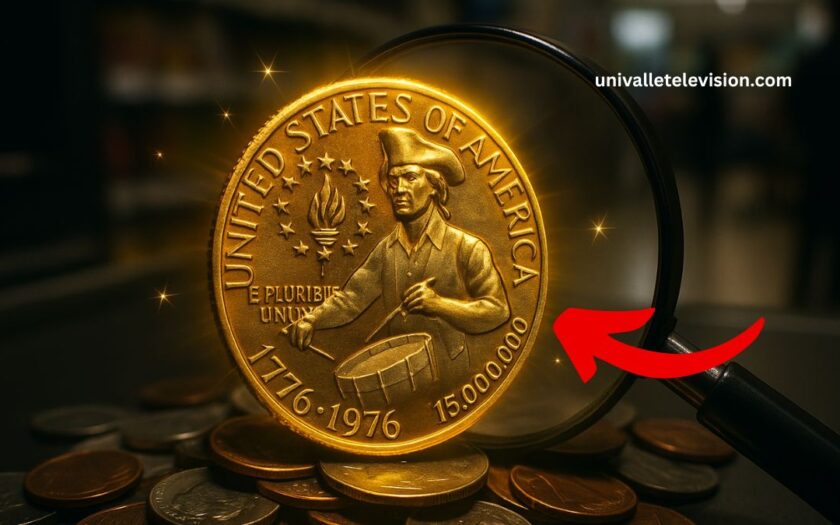If you grew up in the U.S., you probably remember the 1976 Bicentennial quarter with its colonial drummer design. Most of these coins are worth just 25 cents, but some rare ones—like error strikes and pristine proofs—can be valued at millions, with rumors of a $15 million specimen in circulation.
What Makes a Bicentennial Quarter So Valuable?
- Massive Mintage
- Philadelphia (no mint mark): ~809.8 million
- Denver (“D”): ~860.1 million
- San Francisco (“S”): ~4.9 million uncirculated silver-clad & ~8.99 million proofs
- Composition & Design
- Obverse: George Washington by John Flanagan
- Reverse: Colonial drummer & torch of victory (dual date 1776–1976) by Jack L. Ahr (JLA)
Rare Varieties That Fetch Millions
| Variety | Mintmark/Type | Estimated Value | Notes on Rarity |
|---|---|---|---|
| Double-struck (Dime planchet) | Clad, Philadelphia | $9,200+ auction sale | Extremely rare error |
| Filled “D” mint mark error | Denver | $20–$50+ (error in MS uncirculated) | Clogged die anomaly |
| MS69 1976-S silver-clad | San Francisco (proof) | Up to $19,200 | Top-grade collector coin |
| Double-die obverse (DDO) | Any mint | Prices vary (rare) | Can reach $5 million |
| Recently discovered high‑value | Error type unidentified | $1.9–$15 million rumored | Unconfirmed but plausible |
Understanding the $15 Million Claim
Several online coin experts claim a $15 million Bicentennial quarter exists, likely an extreme error such as double-struck, planchet mishap, or missing mint mark . While no publicly documented sale confirms this price, other coins of similar status have sold for millions. For instance:
- Double-die obverse coins have fetched over $5 million.
- A quarter found at a coin show recently was valued at $1.9 million .
Experts believe that an ultra-rare error—combined with perfect grade and provenance—could command the rumored $15 million.
How to Spot a Potential Million‑Dollar Coin
- Inspect Mint Mark and Date
- Mint marks: P (no mark), D, or S
- Error types: double die, missing/flooded D, double mint marks
- Check Composition & Strike Quality
- Look for proof quality (S mintmark, flawless surfaces, deep cameo)
- Evaluate planchet errors: struck on dime, off‑center, etc.
- Get a Professional Grading
- Use PCGS or NGC to authenticate and grade coin (e.g., MS68+ proof)
- Track Provenance and Auction History
- Check sales of double-dies and silver proofs which command high prices
Recent Market Highlights
- MS69 1976-S silver proof sold for $19,200
- Stack’s Bowers 1976 dime‑planchet error sold for $12,000
- Ambiguous coin at coin show valued at $1.9 million
- Speculated double-die error pieces reaching over $5 million
While most 1976 Bicentennial quarters are worth just 25 cents or a few dollars in uncirculated form, rare error types, high-grade proofs, and extraordinary minting anomalies can skyrocket their value—sometimes to seven or even eight figures.
Whether you’re passing coins through your fingers or exploring hidden currency gems, any unusual feature could mean you’re carrying a fortune without realizing it!
FAQs
Could my Bicentennial quarter really be worth millions?
Yes—but only if it’s a rare error (like a double-die), in perfect condition, and has proper grading and provenance.
What’s the most common high-value variety?
The MS69 1976-S silver proof and double-struck on dime planchet are among the most commonly reported expensive types.
How should I get a rare coin authenticated?
Submit it to reputable grading services like PCGS or NGC, which can verify authenticity, assign a grade, and provide an auction-ready certification.

